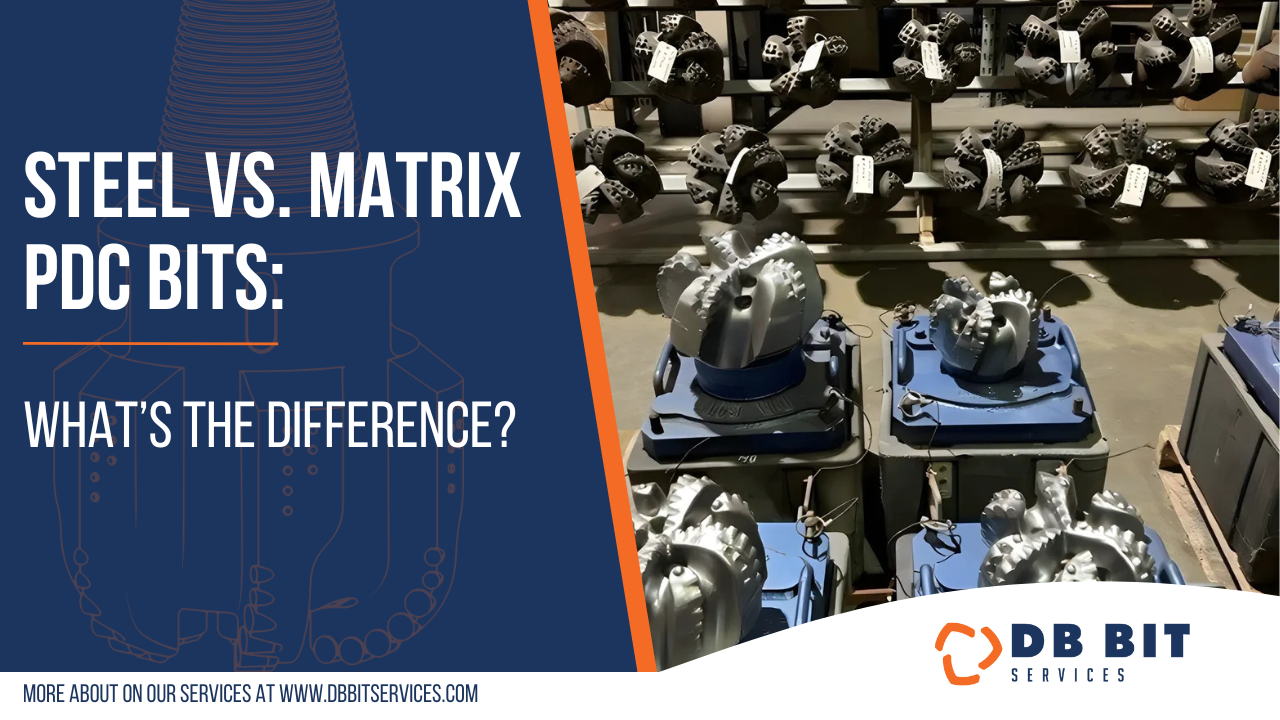Steel vs. Matrix PDC Bits: What’s the Difference?

Steel vs. Matrix PDC Bits: What’s the Difference?
By DB Bit Services
When selecting the right PDC (Polycrystalline Diamond Compact) bit for your drilling operations, an important decision lies in choosing between steel body and matrix body designs. Both serve the same core purpose—cutting through rock—but each has distinct advantages that make them better suited to certain drilling conditions. Here's a breakdown to help you make the best choice.
What Are Matrix Body PDC Bits?
Matrix body bits are constructed using sintered tungsten carbide grains with a metallic binder, producing a dense, abrasion-resistant body. This composite material gives matrix bits exceptional wear and erosion resistance, ideal for high-abrasion formations and high fluid-volume applications
Strengths:
- Outstanding durability in abrasive environments.
- Extended bit life with multiple runs, especially in hard formations
- Reliable performance where erosion is a critical concern
Considerations:
- More brittle, making them less forgiving to impact loads or sudden shocks
- Repair options are limited—significant damage typically means replacement
- Casting manufacturing processes can limit design flexibility, such as blade geometry and hydraulic features
What Are Steel Body PDC Bits?
Steel body bits are machined from high-alloy steel, creating a ductile and robust structure. These bits stand out for their impact resistance, flexibility in design, and cost‑effectiveness when it comes to life-cycle maintenance
Strengths:
- Excellent toughness—able to withstand high-impact, shock-prone environments
- Repairable: wear can be addressed via hard-facing, cutter replacement, or welding, extending bit lives significantly
- Allows for complex bit geometries, including taller blades and larger junk slots for improved cuttings removal
Considerations:
- Generally less wear-resistant than matrix bodies, though modern hard-facing and coatings have improved their durability
- Can incur more erosion in high‑abrasion environments, especially if not upgraded with protective overlays
Which One Is Right for Your Drilling Needs?
Choose Matrix Body when:
- You’re drilling in hard, abrasive rock (like sandstone, limestone, quartzite).
- Erosion resistance and long bit life in high fluid or sandy formations are key.
Choose Steel Body when:
- You expect impact loads (e.g., interbedded layers, fractured formations).
- Repairability and flexibility in design (hydraulics, cutters) will benefit your operation.
- Cost per run and the option to repair and reuse the same bit matter.
Why DB Bit Services Is Your Expert Partner
At DB Bit Services, we understand the unique demands of your drilling environments. Whether you're considering a robust matrix solution or a repair-friendly steel option, our team can guide you toward the most effective, economical choice for your operation. And when damage happens? We specialize in expert repairs to keep your drilling schedule on track and costs down.
Ready to Optimize Your Bit Strategy?
Contact us to discuss which bit best suits your geology and goals—and how DB Bit Services can support it through manufacturing, maintenance, and repair.

